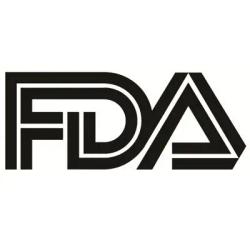
OR WAIT null SECS
RELIEVE-UCCD: Duvakitug Improves Clinical, Endoscopic Outcomes in UC Subgroups
Subgroup analysis findings highlight duvakitug’s efficacy and tolerability across different levels of inflammation in ulcerative colitis.
Findings from a subgroup analysis of the phase 2b RELIEVE-UCCD study are shedding light on the clinical and endoscopic efficacy of duvakitug in patients with ulcerative colitis (UC) with moderate and severe endoscopic disease.1
The data were presented during a late-breaking session at Digestive Disease Week (DDW) 2025 by Walter Reinisch, MD, PhD, director of the IBD Study Group at the Medical University of Vienna, and add to the understanding of duvakitug’s efficacy and tolerability across different levels of inflammation.1
A human IgG1 monoclonal antibody, duvakitug inhibits TL1A binding to death receptor 3 (DR3), a driver of inflammation in UC. Its use in UC and Crohn’s disease was explored in RELIEVE-UCCD, a randomized, placebo-controlled, double-blind, 14-week induction study, which met its primary endpoints for clinical remission and endoscopic response in patients with moderate to severe inflammatory bowel disease.2
A total of 137 patients with UC were randomly assigned to receive a subcutaneous loading dose of duvakitug 2250 mg followed by SC duvakitug 900 mg or duvakitug 450 mg every 2 weeks (q2w), or matching placebo loading dose followed by placebo q2w.1
Patients were required to have a Mayo endoscopic subscore (MES) of 2 or 3 for study eligibility. In the present analysis, clinical and endoscopic outcomes were assessed by baseline endoscopy score of MES 2 (moderate) and MES 3 (severe). Endpoints included clinical remission, endoscopic improvement, endoscopic remission, and histological endoscopic mucosal improvement (HEMI).1
Among patients with baseline MES 3, clinical remission at week 14 was achieved by 37% of patients in the duvakitug 900 mg arm and 13% in the duvakitug 450 mg arm compared with 7% in the placebo arm. In patients with baseline MES 2, clinical remission was achieved by 63% of patients in the duvakitug 900 mg arm and 58% in the duvakitug 450 mg arm compared to 41% in the placebo arm.1
Investigators observed greater treatment effects for both duvakitug doses compared with placebo in MES 2 and 3 subgroups for endoscopic improvement, endoscopic remission, and HEMI. They also pointed out the overall adverse event profile was similar across treatment arms by disease severity subgroups.1
“In UC patients, duvakitug demonstrated clinical and endoscopic efficacy and was well tolerated in both the moderate and severe endoscopic disease subgroups in this Phase 2b study,” investigators concluded.1 “These findings support further development of duvakitug as a potential treatment option for moderately to severely active UC.”
References
Reinisch W, Danese S, Sands BE, et al. DUVAKITUG INDUCTION TREATMENT IMPROVES CLINICAL AND ENDOSCOPIC OUTCOMES IN MODERATELY TO SEVERELY ACTIVE ULCERATIVE COLITIS: AN ENDOSCOPIC SUBGROUP ANALYSIS OF DATA FROM THE RELIEVE-UCCD PHASE 2B STUDY. Abstract presented at Digestive Disease Week 2025 in San Diego, CA, from May 3 - May 6, 2025.
Brooks A. Duvakitug Meets Primary Endpoints in Phase 2b RELIEVE UCCD Study for IBD. HCPLive. December 17, 2024. Accessed May 6, 2025. https://www.hcplive.com/view/duvakitug-meets-primary-endpoints-phase-2b-relieve-uccd-study-ibd


